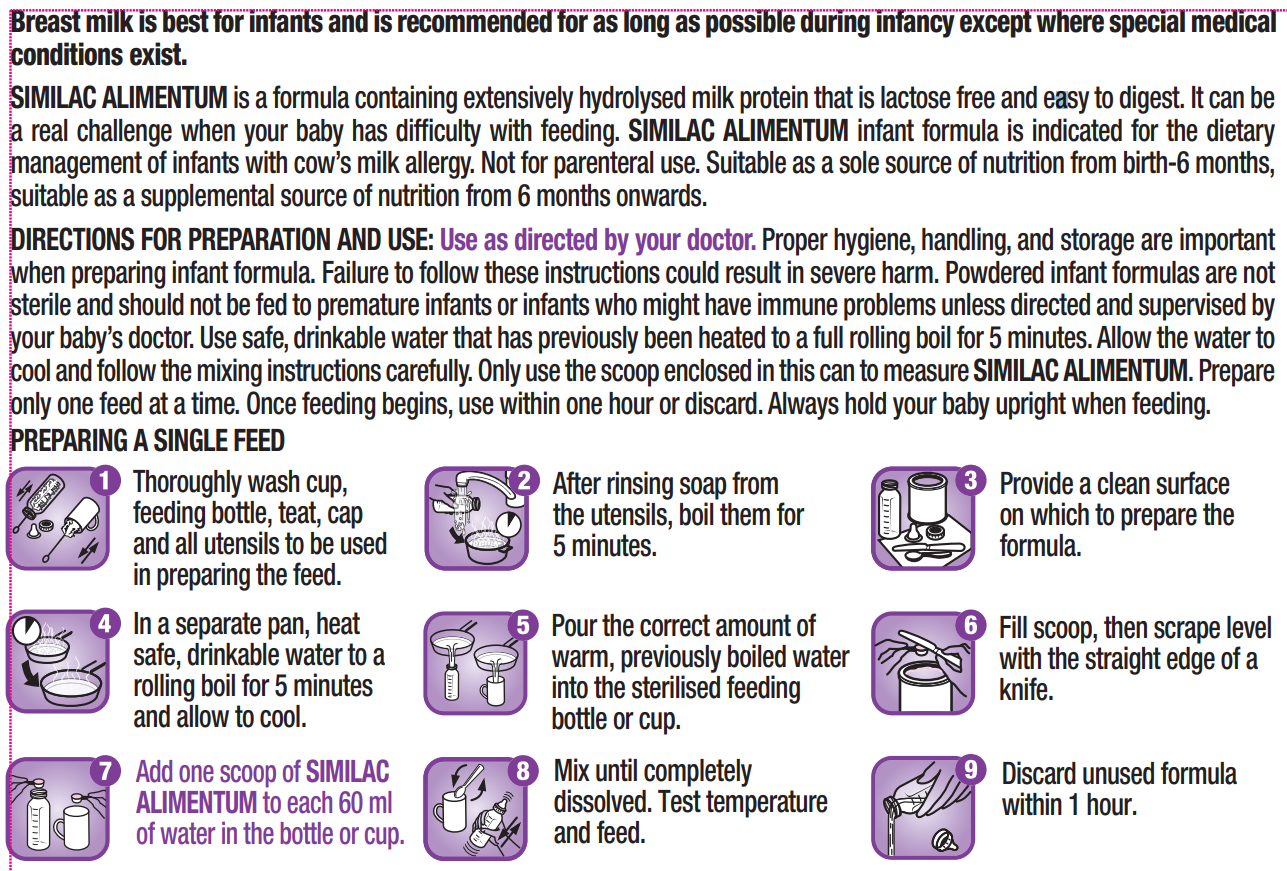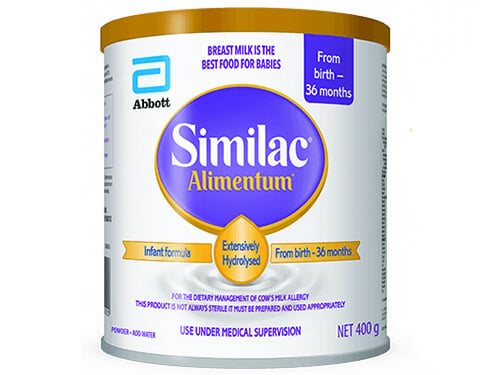Maltodextrin, vegetable oils (high oleicsafflower seed, MCT (medium chain triglycerides) oil, soybean), casein hydrolysate (protein source), sucrose, minerals (calcium citrate, potassium citrate, calciumphosphate, potassium phosphate, magnesium chloride, sodium chloride, potassium chloride, ferrous sulphate, zinc sulphate, cupric sulphate, manganese sulphate, potassium iodide, sodium selenite), modified cornstarch, xanthan gum, arachidonic acid (ARA) from M. Alpina oil, L-tyrosine, L-cystine, vitamins (ascorbic acid,dl-alpha tocopheryl acetate, niacinamide, calcium pantothenate, Vitamin A palmitate, riboflavin, thiamine chloridehydrochloride, pyridoxine hydrochloride, folic acid, Vitamin K1 (phylloquinone), biotin, Vitamin D3 (cholecalciferol), cyanocobalamin), 2’-fucosyllactose (2’-FL), docosahexaenoic acid (DHA) from C. Cohnii oil, L-tryptophan, choline chloride, taurine, m-inositol, ascorbylpalmitate, L-carnitine, mixed tocopherols. May contain: potassium hydroxide, citric acid. Allergens: Cow’s milk









